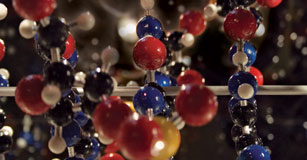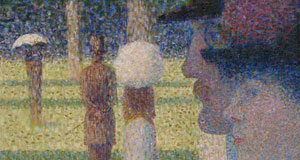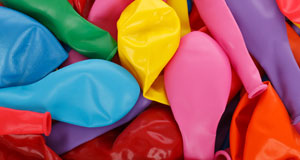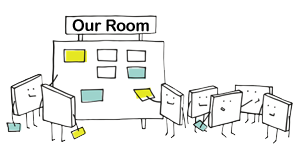Create a Vision Board
Students create a vision board to represent what it will look and feel like when they reach their goals.

Task
Did you know that the simple act of writing down your SMART goals can help you achieve them? In this project, you will do even more.
After writing down SMART goals, you will create a vision board that provides a daily reminder of what achieving these goals looks and feels like to help your brain visualize success and provide motivation to do the necessary work.
Engage
A vision board is a collage of images, words, and short phrases that provide a tangible idea of what your future success looks and feels like. The visuals representing your goals serve as a daily reminder of what your future can be, motivating you to do the work necessary to achieve them.
Your brain will work tirelessly to achieve the statements you give your subconscious mind. And when those statements are the affirmations and images of your goals, you are destined to achieve them! — Jack Canfield
Before you can begin work on a vision board, you need to set your goals, after all, if you do not know where you are going, how will you ever get there?

Have students use the SMART formula —Specific, Measurable, Attainable, Relevant, Timely to articulate their goals. Writing goals that are specific and measurable makes it easier to achieve them. These descriptions also provide details that can help students visualize both success and the steps necessary to reach the goal.
Create
Translating goals into visuals and short phrases can help students more closely define their goals and identify details, helping students know when they are achieved, as well as what progress has been made.
Have students reread their SMART goals. Write the goal, or goals, in the middle of a cluster or web organizer. Brainstorm words and phrases to describe what meeting this goal looks like as well as how it feels.
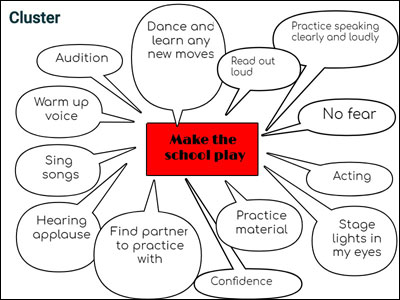
Next, look at the words in your cluster diagram and find pictures, phrases, and quotes that represent these goals, inspire you to do the work, and demonstrate how you think you will feel when you have met them. In other words, what does your success look like?
Consider bringing in an interior designer to talk to your students about creating design boards. When designing a room or a home for a client, interior designers used design boards to help narrow focus, provide inspiration, and create a clear vision for action.
Do a web search using the words and phrases you have identified on your cluster or web diagram. Download, or create an online folder, to collect images that mean something when you look at them. Students can also use a camera to capture images or a creativity tool to create images, words, and phrases.

A vision board should include images of things that make you feel a certain way, not just things you want. If you think achieving your goal will make you feel like the crazy drop from the roller coaster you rode on last summer, include the image from the amusement park where you and your friends are just about to go over the top.
Create a collage of the images. You can print, cut, and attach to a bulletin board or piece of cardboard or use a digital tool like Wixie to design one.
Share
For a vision board to be useful in achieving your goals, you need to look at your vision board every day to affirm, believe in, and internalize your goals. Unlike the benefits of sharing your goals publicly, vision boards are personal and students may not want to showcase them.
Print several copies of each student's board, so students can choose to put it somewhere they will see it everyday. At home they might want to place near their bed or desk or hang next to a mirror they use in the morning as they get ready. Students could also hang their vision board in a locker or use it as the cover of a notebook or binder. Save the digital version as the lock screen on a personal device or computer desktop so students see it repeatedly and give their mind and motivation a boost.
Students don’t need to take a vision board down once they achieve a goal. Looking at the vision board after goals have been achieved help students acknowledge the progress they have made. Students will hopefully feed both gratitude for new accomplishments as well as a sense of pride in their efforts to achieve them.
Assessment
You can get a sense of a student’s prior experience with resolutions and goals from your initial conversations about goal setting and their ability to define goals that are realistic, timely, and attainable.
While we usually define success in terms of achieving goals, this lesson provides an opportunity to talk about how we measure success. Is success only achieving our goal? If your site is using Carol Dweck's Growth Mindset approach, be sure you talk about success through effort and progress.
The final image is a useful summative assessment for each student's overall skill in communicating ideas using a visual medium; however, evaluating their work may be counterproductive for this project.
If you brought an interior designer in to kick off vision board creation, encourage them to come during the work process and during the celebration to share positive examples they find in the student work.
Resources
Rhonda Byrne. The Secret. ISBN: 1582701709
Lesson Plan - Set SMART Goals
Psychology Today - Seeing is Believing: The Power of Visualization
Jack Canfield - How to Create a Vision Board
Standards
National Art Education Standards
1. Understanding and applying media, techniques, and processes. Students:
a. select media, techniques, and processes; analyze what makes them effective or not effective in communicating ideas; and reflect upon the effectiveness of their choices
ISTE NETS for Students 2016:
1. Empowered Learner
Students leverage technology to take an active role in choosing, achieving and demonstrating competency in their learning goals, informed by the learning sciences. Students:
a. articulate and set personal learning goals, develop strategies leveraging technology to achieve them and reflect on the learning process itself to improve learning outcomes.
6. Creative Communicator
Students communicate clearly and express themselves creatively for a variety of purposes using the platforms, tools, styles, formats and digital media appropriate to their goals. Students:
c. communicate complex ideas clearly and effectively by creating or using a variety of digital objects such as visualizations, models or simulations.




